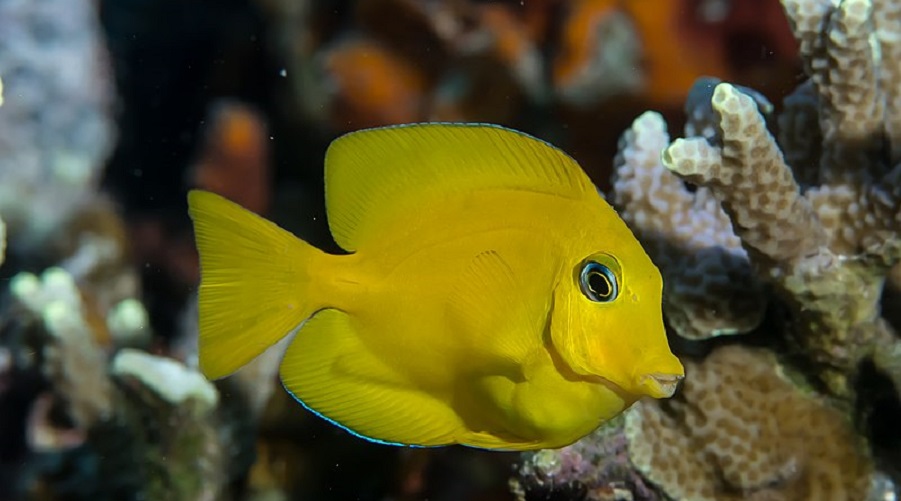
Mimic surgeonfish. Reference photo by Rickard Zerpe, Wikimedia Commons.
The world’s waterbodies are filled with predatory fish feeding on other animals from zooplankton to squid and other fish, while “vegetarian” or herbivore fish are rare, new research has found.
By developing a framework to better understand aquatic biodiversity, an international team of researchers has analyzed the key traits – size, productivity and trophic level – of over 31,000 fish species recorded in FishBase, the online encyclopedia of fishes.
Among other findings, they document that most fish species are low in the food chain and feed on tiny animals that are carried along by ocean currents – zooplankton –, whereas only 1,200 species are herbivores, and less than 1,000 species are large-fish-eating top predators.
They also noticed that herbivores are slightly larger than omnivores and low-level predators, while mid-level and top predators tend to be the largest of them all.
“Faced with the amazing diversity of over 30,000 species of fish, the goal of the study was to find and understand overarching patterns in functional traits,” said Rainer Froese, lead author of the Cybium paper that presents these findings and senior researcher at the Helmholtz Centre for Ocean Research GEOMAR. “Also, we wanted to create a tool that allows scientists to visualize and compare the roles fishes play within their ecosystems based on those traits and taking into account each area’s environmental conditions and their ongoing change.”
A main finding of the study is an ‘evolutionary axis’ from a few large and evolutionary old carnivore species with slow population growth to many small and medium-sized evolutionary young species across the whole food spectrum and with fast population growth. Species numbers quickly decline with distance from this axis, with no small species having low population growth and no large species having fast population growth.
The research also allowed Froese and colleagues to make comparisons between the predominant traits of marine versus freshwater fish. When it comes to diet, for example, they found that mid-level to top predators abound in marine waters while herbivores and omnivores are more predominant in freshwater. In fact, there are twice as many herbivorous species in rivers, lakes, wetlands, and the like. In terms of size, most very large and large fish, like sharks, live in the ocean, but the number of small- and medium-sized fishes is similar in both marine and freshwater environments.
“The new framework allows for the visual detection, examination and verification of the patterns connected to species’ roles within an ecosystem, through their life cycles and over evolutionary and current time spans, as well as the interactions between those traits,” said Daniel Pauly, co-author of the paper and principal investigator of the Sea Around Us initiative at the University of British Columbia. “This can be used to further study the combined traits of a single species against the background of all other species or the other species in its respective ecosystem.”
The study “A simple framework for the exploration of functional biodiversity” was published in Cybium https://doi.org/10.26028/cybium/2023-003

